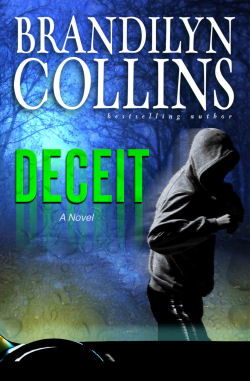|
Many
times when people talk, they don’t say what they mean. Their words are
on one level, and the meaning lies underneath. The meaning may not have
much at all to do with the spoken words. This is called subtexted
dialogue.
It’s a common error for
fledgling writers (and, unfortunately, sometimes not so fledgling) to
write what I call WYSIWYG dialogue: What You See Is What You Get. All
meaning is right on the surface—or “on the nose” as it’s sometimes
called. Everything that’s meant is actually said. WYSIWYG dialogue that
should be subtexted won’t seem well written. It’ll sound amateurish and
not real to life.
Say two women, Jane and Mary,
have volunteered for an all-day job at the church. After a time of
working together, they get into a disagreement. Jane makes a
thoughtless comment and hurts Mary’s feelings. They work for the next
hour in testy silence. Meanwhile, Jane feels embarrassed about what
she’s done and wants to make amends. At the end of their work, Jane
says, “Want to go get a coffee? I’m buying.”
But getting a coffee isn’t
really the main thing Jane wants, is it? What she’s trying to do is
make amends. If we were to write what she’s really saying, it would
look more like: “I’m really sorry I said that. I feel embarrassed about
it. Would you let me buy you a coffee to make it up to you?”
Now the interesting thing about
this subtext is that Mary will immediately understand Jane’s underlying
meaning. But she won’t want to come out and say so. So she’ll respond
within the same subtext. She might say, “Thanks. That would be great,”
actual meaning: “I can see you feel bad, and I accept your apology.” Or
she could say, rather curtly, “No thanks. I don’t have time,” meaning:
“I’m still royally ticked at you and am not ready to accept an apology.
And if you’re embarrassed about what you said, good! You should be.”
Of course, some dialogue should
be WYSIWYG. The trick is knowing when to subtext.
People (and characters) have two
general reasons for not saying what they mean: (1) they don’t want to
admit what they’re thinking; or (2) they don’t need to say what they’re
thinking because the other person already knows it. The “coffee”
conversation is an example of situation #1: Jane doesn’t want to openly
apologize because she’s embarrassed about the incident and doesn’t want
to bring it up.
Situation
#2 often occurs when the speakers stumble upon a subject that carries a
lot of baggage between them. For example, let’s say your character Todd
has a history of lying to his wife, Sue, and not supporting her
emotionally. This has hurt her deeply. Now she catches him in another
lie—something to do with helping their mutual friend Patricia. The lie
in itself is a small one, but it triggers Sue’s memories of Todd’s
numerous major betrayals. Her response could be written like this: She
pulled back, eyes narrowed. “How thoughtful of you to be there when Pat
needed you.” Real meaning—how can you be so quick to
help a friend when you’re never there for me?
Believe me, Todd will get the point.
|
Notice
where the true meaning
lies in the above examples of subtexted dialogue—not in the words
themselves, but in everything that is occurring around the words:
through the characters’ Thought, Inflection, Movement, and Expression.
You can remember these elements through the acronym TIME.
In Getting into
Character I use a scene containing a mere five innocuous
words of dialogue as an example of subtexting and the use of TIME
elements. Here’s the dialogue:
“Morning.”
“Morning.”
“Sleep well?”
“Yeah.”
In order to show how powerful
subtexting can be, let’s say this is the opening scene of a book. To
this point we don’t know the characters at all. How might you write a
short scene, using these lines of dialogue, that fully depicts a very
troubled marriage? That is, a scene without pages
of backstory that simply tell us the marriage is troubled. How might we
see the troubled marriage through merely the dialogue and its
surrounding TIME elements?
Try it. See what you come up
with. Next month we’ll look at the scene from Getting into
Character and discuss how each TIME element is used.
----------------------
Adapted from Getting Into
Character: Seven Secrets a Novelist Can Learn from Actors by Brandilyn
Collins.

 |